Ancient heritage highlights Xinjiang's key national unity role
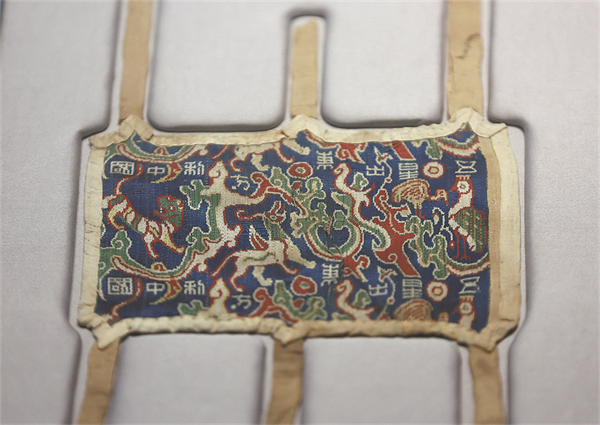
A Han Dynasty brocade is displayed at the Xinjiang Museum in Urumqi, capital of Xinjiang Uygur autonomous region. [Photo/Lu Xu]
Archaeological discoveries provide clearer picture of social development
Beneath sands and snow, and eroded by time, myriad cultural relics have emerged to tell a colorful story of the past in a vast area of northwestern China.
Archaeological findings in the Xinjiang Uygur autonomous region in recent years have helped in the discovery of the origins of civilization in the area and the role played in forming a united nation.
The discoveries range from monumental cities that reflect the glory of the Silk Road to various sites scattered from the Tianshan Mountains to the Pamir Plateau.
Thanks to a blueprint on archaeology in Xinjiang produced by the National Cultural Heritage Administration and released by the regional government in 2018, related work has proceeded swiftly in the past five years, yielding key breakthroughs.
Dang Zhihao, deputy director of the Xinjiang Institute of Cultural Relics and Archaeology, said that with the support of nine institutes and universities elsewhere in China, 91 archaeological excavation programs have been launched throughout Xinjiang since 2018.
The programs involve more than 20 sites, ranging from the Paleolithic period to the Qing Dynasty (1644-1911), and in the past five years, four sites in Xinjiang have been included in China's annual top 10 lists of new archaeological findings.
"We've gained much from the studies of city ruins, graves, beacons, temples, caves, ancient mining areas and other sites. This precious heritage gives us a clearer picture of Xinjiang's social development," Dang said.
Some findings have produced vital clues to life in the distant past.
For example, the Tongtiandong cave site in Jeminay county, Altay prefecture, which is some 45,000 years old, yielded the earliest-known human settlement in Xinjiang. Stone tools excavated at the site also provided crucial evidence linking the Stone Age and Iron Age with human migration across the Eurasian grasslands.
In Tashikurgan Tajik autonomous county, Kashgar prefecture, on the edge of the Pamir Plateau, archaeologists found an 8,000-year-old plant that produced stone tools — one of the largest at that time in China.
Meanwhile, the Jirentai Goukou site in Nilka county, Ili Kazak autonomous prefecture, offered proof of the world's earliest use of coal some 3,000 to 3,600 years ago, while architectural ruins and pottery found at the site shed light on how a so-called nomad economy formed in the region.
"These discoveries have significantly deepened our understanding of Xinjiang's prehistoric era," Dang said.
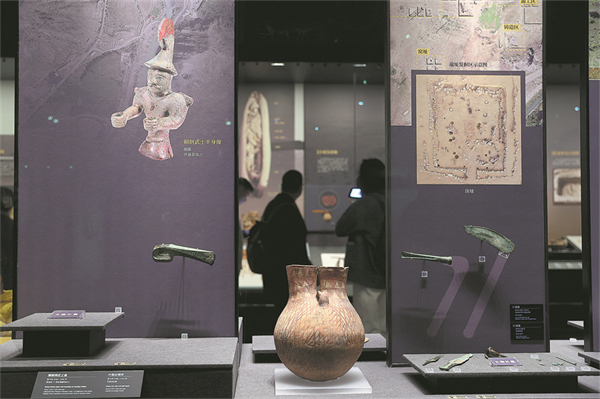
The museum showcases recent archaeological findings in the region. [Photo/Lu Xu]
Unity and diversity
Archaeology has also provided vital evidence of how central dynasties in ancient China governed the Xinjiang area, thus consolidating national unity, Dang added.
In Jimsar county, Changji Hui autonomous prefecture, excavations at the Tang Dynasty (618-907) Beiting ruins continue to provide a new understanding of this trade hub. The ruins, also known in the past as Beshbaliq, were inscribed on the World Heritage List in 2014 as part of Silk Roads: the Routes Network of Chang'an-Tianshan Corridor.
Guo Wu, a researcher at the Chinese Academy of Social Sciences' Institute of Archaeology, who led the excavations, said: "This was the largest ancient city on the northern slopes of the Tianshan Mountains from the 7th to 14th centuries. From excavations of the city gates, Buddhist temples, streets and waterways, we have gradually pieced together its layout to gain an understanding of Beiting's extraordinary political status in northern Xinjiang."
The Beiting Protectorate was established in the city during the Tang Dynasty as a center to effectively govern northern Tianshan to ensure stability and prosperity of the Silk Road.
"Our new findings show that the central dynasty's governance system was introduced to the city," Guo said.
For example, broken pieces of pottery bearing the characters bei tian si, which translates as "a temple to show mercy", were unearthed in a core area of the Beiting ruins in 2021.
The findings show that even frontier areas such as Beiting were not neglected in extending the national system of governance.
The ruins of temples show that their construction methods and designs bear a close resemblance to those used for their counterparts on the plains of central China.
"The grandeur of the unearthed ruins also matches historical findings that Tang rulers spent a huge amount of their wealth and energy to safeguard this gateway leading to the west," Guo said. "The site also inspires us to understand the importance of a shared community in China in a modern context."
At the Kiyak Kuduk beacon towers site in Yuli county, Bayingol Mongolian autonomous prefecture — one of China's top 10 new archaeological findings in 2021 — a group of frontier posts yielded hundreds of documents and letters on subjects ranging from politics, the military, and the economy, to culture, religion and many other themes. These findings further reflect the Tang rule in the region.
Handwritten notes from Tang soldiers found at the site also document their personal lives.
Hu Xingjun, the leading archaeologist from the Xinjiang Institute of Cultural Relics and Archaeology working at the site, said: "The findings provide crucial references for us to discover how the Tang Dynasty managed its borderlands and how transportation along the Silk Road was ensured by the central government at the time. Many gaps in historical documents are thus filled."
Rule of Xinjiang by central dynasties dates back way beyond the Tang Dynasty, with the Protectorate of the Western Regions established during the Han Dynasty (206 BC to AD 24). However, scholars have still to locate the exact location of the protectorate.
Nonetheless, in the past five years, at the Zorkut site in Luntai county, Bayingol, unearthed ruins of grand architecture, high terraces, and three layers of city foundations indicate its core status during the Han Dynasty.
Xinjiang was long known as a place where different religions coexisted, and archaeologists have uncovered more evidence of this.
The newly discovered Tangchaodun site in Qitai county, and the Xipang site in Turpan, both of which date from the Tang Dynasty to the Yuan Dynasty (1271-1368), are arguably the best evidence of such cultural exchanges.
Nestorian Church ruins were excavated at both sites, along with manuscripts written in various languages along the Silk Road, including Chinese, ancient Uygur script and Syriac.
Known as jingjiao in ancient Chinese documents, the Nestorian Church, a branch of Christianity that originated in present-day Syria, was once popular in China. Ruins of a Buddhist temple and even a Roman-style bath were also found at the Tangchaodun site.

A cultural relics conservator at the Xinjiang Institute of Cultural Relics and Archaeology works on excavated pottery. [Photo/Wang Kaihao]
Global attention
Archaeological investigations began in Xinjiang early in the 20th century, when numerous overseas explorers arrived in the region. These foreign expeditions triggered huge controversy, as many precious artifacts, documents and murals subsequently ended up overseas.
"However, studies of ancient civilizations in Xinjiang became a popular topic in academia worldwide," Dang said. "Today, overseas scholars are still eager to familiarize themselves with the new material we have discovered in recent years, and through exchanges, archaeologists can nurture more ideas."
In the 1990s, overseas archaeologists, especially those from Japan, took part in key joint excavations in Xinjiang. A renowned Han Dynasty brocade embroidered with words that translate as "the five planets appeared in the eastern sky, benefiting the central plains", was found at the Niya site in Minfeng county, Hotan prefecture.
These excavations also triggered a fad for the Silk Road among the Japanese public. The Great Silk Road World Heritage Exhibition, which is ongoing at Tokyo Fuji Art Museum, features 237 precious artifacts on loan from 27 Chinese institutions. Relics unearthed in Xinjiang are one of the main highlights of this biggest Chinese exhibition themed on the Silk Road to be staged overseas for a decade.
Dang said that despite previous discoveries, it is crucial for archaeologists from Xinjiang to explore more sites outside China in detail to gain a bigger picture of cultural communications from physical evidence.
On Sunday, Dang and his colleagues at the Xinjiang Institute of Cultural Relics and Archaeology set off on their first official visits to Kazakhstan and Uzbekistan to look for sites for joint excavations and studies in the two countries.
"By joining overseas projects and obtaining materials firsthand, we can better understand our own studies and enable our voices to be heard more widely around the globe," Dang said.
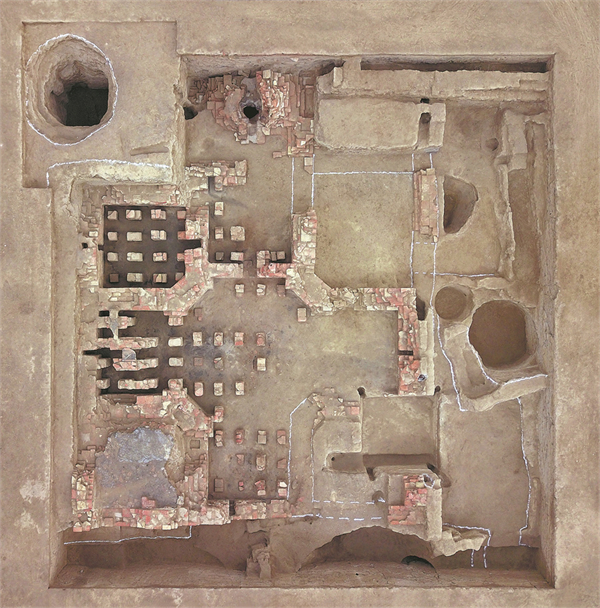
An aerial view of a Roman-style bath at the Tangchaodun site in Qitai county, Xinjiang. [Photo/seexinjiang.com]
Inspiration for public
Archaeological discoveries not only inspire scholars to solve academic puzzles, but they also help the public better know their homeland.
Thanks to Xinjiang's dry climate, relics unearthed in the region are usually in good condition when found, despite their age. The brocade bearing the words "five planets appeared in the eastern sky …", textiles and mummies thousands of years old are key attractions for visitors to the Xinjiang Museum in Urumqi, capital of the autonomous region. In addition, new findings in recent years have created fresh interest.
The renovated Xinjiang Museum, which opened to visitors in May last year, has played host to many new findings in the region, including coal from the Jirentai Goukou site and documents unearthed from Tang Dynasty frontier posts.
Yu Zhiyong, director of the museum and also an archaeologist, said, "The exhibits vividly and comprehensibly illustrate history to the public.
"They show that the cultures of all ethnic groups are an inseparable part of Chinese civilization and that Xinjiang has always been a place where many ethnic groups live in a shared community, different religions have long coexisted, and various cultures join together."
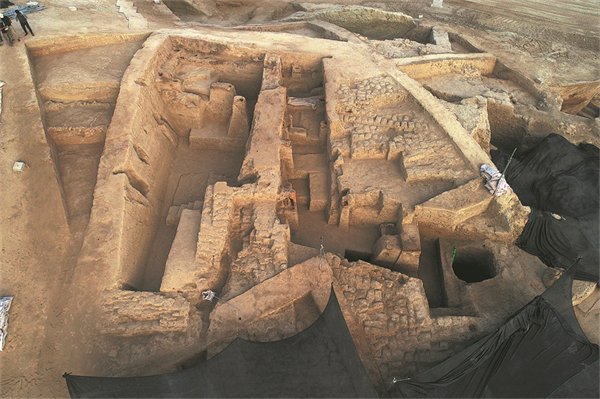
The Zorkut site in Luntai county, Xinjiang, offers clues to ruins from the Han Dynasty. [Photo/seexinjiang.com]
Thanks to new archaeological exhibitions, the museum has received more than 1.7 million visits since its re-opening last year. In busy periods, it welcomes more than 15,000 people a day.
"During an excavation, we often find many relics of the same type and design, such as pottery," Dang said. "Apart from providing us with samples to continuously study at the institute, these relics can provide rich collections for the growing number of new museums across the region."
Zoya Baqit, an associate research fellow at Altay Museum in northern Xinjiang, who joined the excavation at the Tongtiandong site, said: "I simply cannot believe that I can make a contribution to such a milestone discovery. It makes me feel proud of my hometown."
Graduating from Xinjiang University after studying history, Zoya, a member of the Kazakh ethnic group, feels that archaeology helps locals better understand their past and provides a big picture of how different cultures met with each other.
For example, at the Tongtiandong cave site, archaeologists found 5,000-year-old carbonized grains of millet and wheat. Millet was thought to originate from North China — the world's oldest-known human-cultivated millet grains were found in Beijing about 10,000 years ago — while wheat was widely considered to be first grown in the Mesopotamia region in West Asia.
"The discovery of millet and wheat in Altay reflects the pivotal role our hometown played in linking different regions," Zoya said. "Archaeological evidence shows the close connections between Xinjiang and the plains of central China throughout history. I want to explain this interesting story to younger visitors in my daily work."
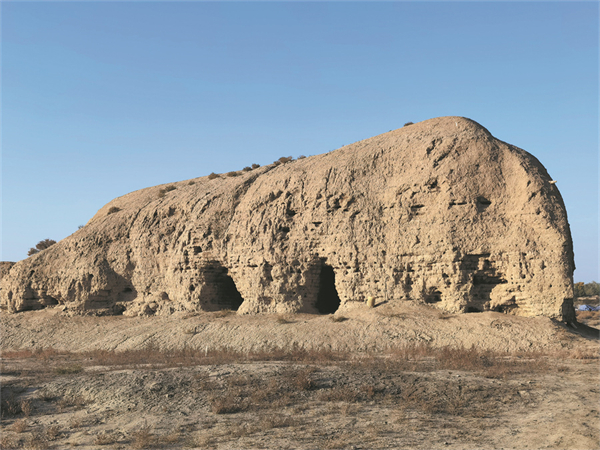
A wealth of discoveries made at the Beiting site in Jimsar county, Xinjiang, have provided evidence of its key status on the ancient Silk Road. [Photo/Wang Kaihao]
Archaeology can also enrich the public's visiting experiences, with the Beiting site being home to Xinjiang's first national-level archaeological ruins park.
The park has welcomed more than 90,000 visitors this year. Digitization and virtual reality technology provide them with a panoramic view of the site and its buildings, and close-ups of excavated murals and statues.
Saydin Abudula, deputy director of the Jimsar Museum, who is in charge of conservation at the site, said excavations in recent years have helped people understand that the city's original landscape was different from the arid desert scene of today.
"This was a place with a network of waterways. The excavations not only provide reference points for us to preserve earthen ruins, they also inspire us to develop more related thematic visiting programs," Saydin said.
At its peak during the Tang Dynasty, Beiting was home to more than 40,000 residents, indicating that it was a big city at that time.
"By fully explaining the excavated ruins, we can tell a splendid story to tourists. Better recognition of the site will further bolster the local cultural industry and economy," Saydin added.
 Attractions
Attractions Dining
Dining Culture
Culture